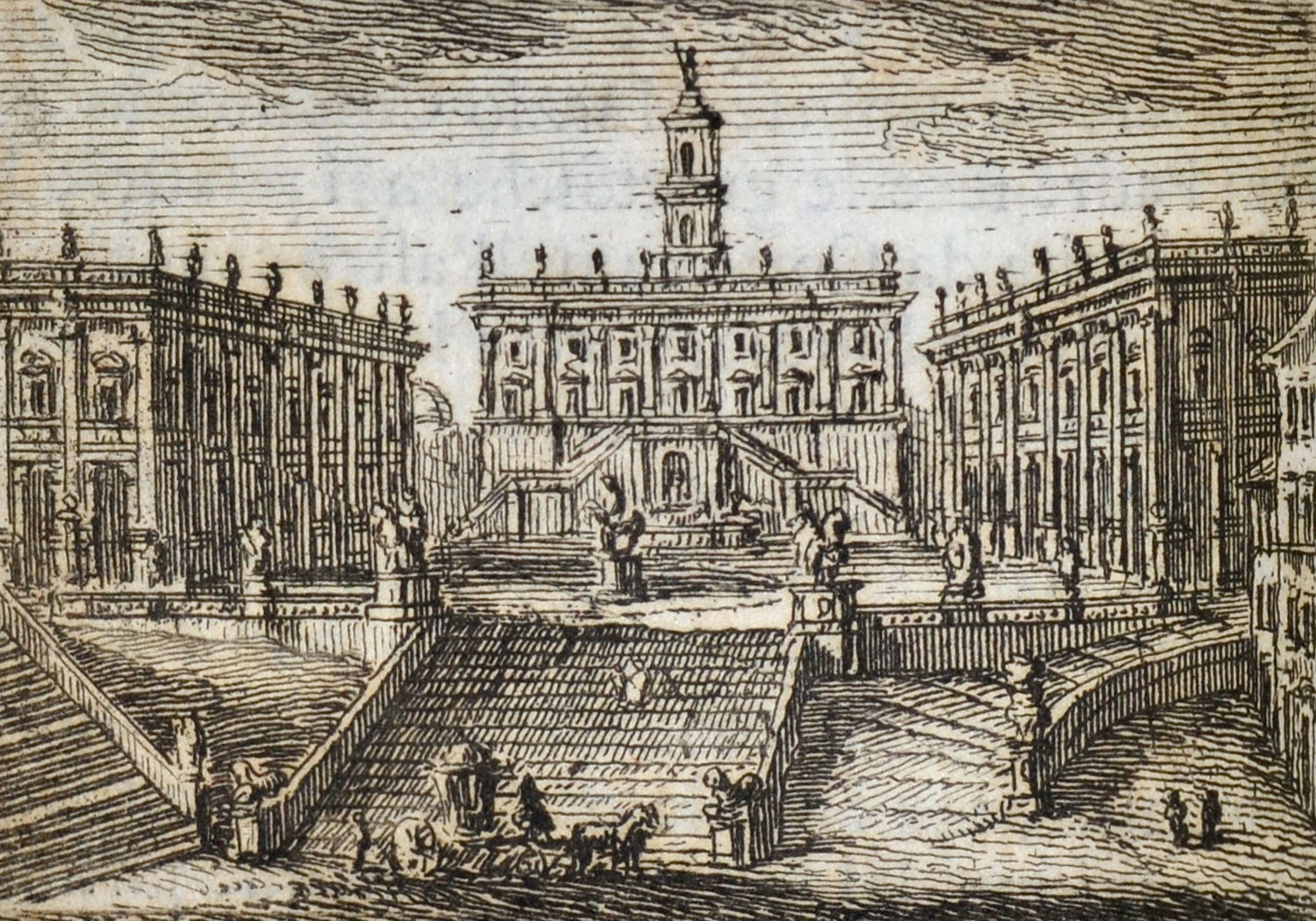
| Main Author: | Vasi, Giuseppe 1710-1782 |
| Language(s): | Italian |
| Published: | In Roma : nella stamperia di Archangelo Casaletti, 1777 |
| Physical Description: | 3 f. pages, 584 pages : illustrations ; 16 cm |
| Holdings: | American Academy in Rome Library |
Itinerario Istruttivo
Diviso in Otto Giornate
Per ritrovare con facilita tutte le Antiche, e Moderne Magnificenze di Roma
Instructive Itinerary - Divided into Eight Days
To easily find all of the Magnificence of Ancient and Modern Rome
Giuseppe Vasi
A visitor to Rome in the second half of the eighteenth century would have marveled at the city’s countless wonders of art, architecture, engineering, and gardens, as one continues to do today. The curious traveler would have purchased a guidebook like the one explored on this website, published by the printmaker Giuseppe Vasi (1710-1782). This website makes Vasi’s Instructive Itinerary Divided into Eight Days... accessible to a contemporary audience. Guides to Rome, such as Vasi’s, helped visitors untangle the complicated historical web of the city’s ancient, medieval, Renaissance, and baroque layers. Moreover, Vasi wrote and illustrated his guide in such a way as to underline the cultural supremacy of modern Rome and, by extension, the papacy during a period of political decline and economic stagnation in what was then the cultural capital of Europe. Many buildings Vasi described in his text have survived to the present day, making his daily routes inside and outside the city’s Aurelian Walls as compelling for contemporary travelers as for those visiting Rome in the second half of the eighteenth century. With this website and its accompanying book, modern travelers can follow in the footsteps of their eighteenth-century counterparts, rediscovering Rome’s enigmatic allure. Vasi’s guide tells the story of Rome’s expansion from its mythical foundations to the second half of the eighteenth century. It is exceptional amongst other guidebooks to the Eternal City as it describes and documents monuments and fabric buildings, some of which are now lost, providing unparalleled insight into the day-to-day activities throughout the city. Moreover, it is one of the few to discuss the works of female artists and their contributions to Rome’s artistic patrimony. He includes Lavinia Fontana’s (1552-1614) paintings and the art and architecture of the celebrated Roman Baroque painter-architect Plautilla Bricci (1616-1705)—the first woman to practice architecture whose name and work have survived today.
Itinerario Istruttivo Day by Day
- text | map Day 1 from Ponte Milvio to Santa Croce in Gerusalemme
- text | map Day 2 from Porta Maggiori to Muro Torto
- text | map Day 3 from Sant'Atansio dei Greci to San Lorenzo Fuori le Mura
- text | map Day 4 from Conservatorio della Divina Provvidenza to Palazzo Massimi
- text | map Day 5 from Sant'Andrea della Valle to Ponte Cestio
- text | map Day 6 from San Benedetto in Piscinula to Villa Lanti
- text | map Day 7 from San Salvatore in Onda to Rovine del Ponte Trionfale
- text | map Day 8 from Ponte Sant'Angelo to Villa Madama